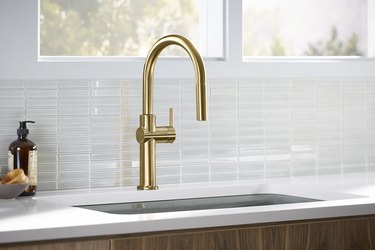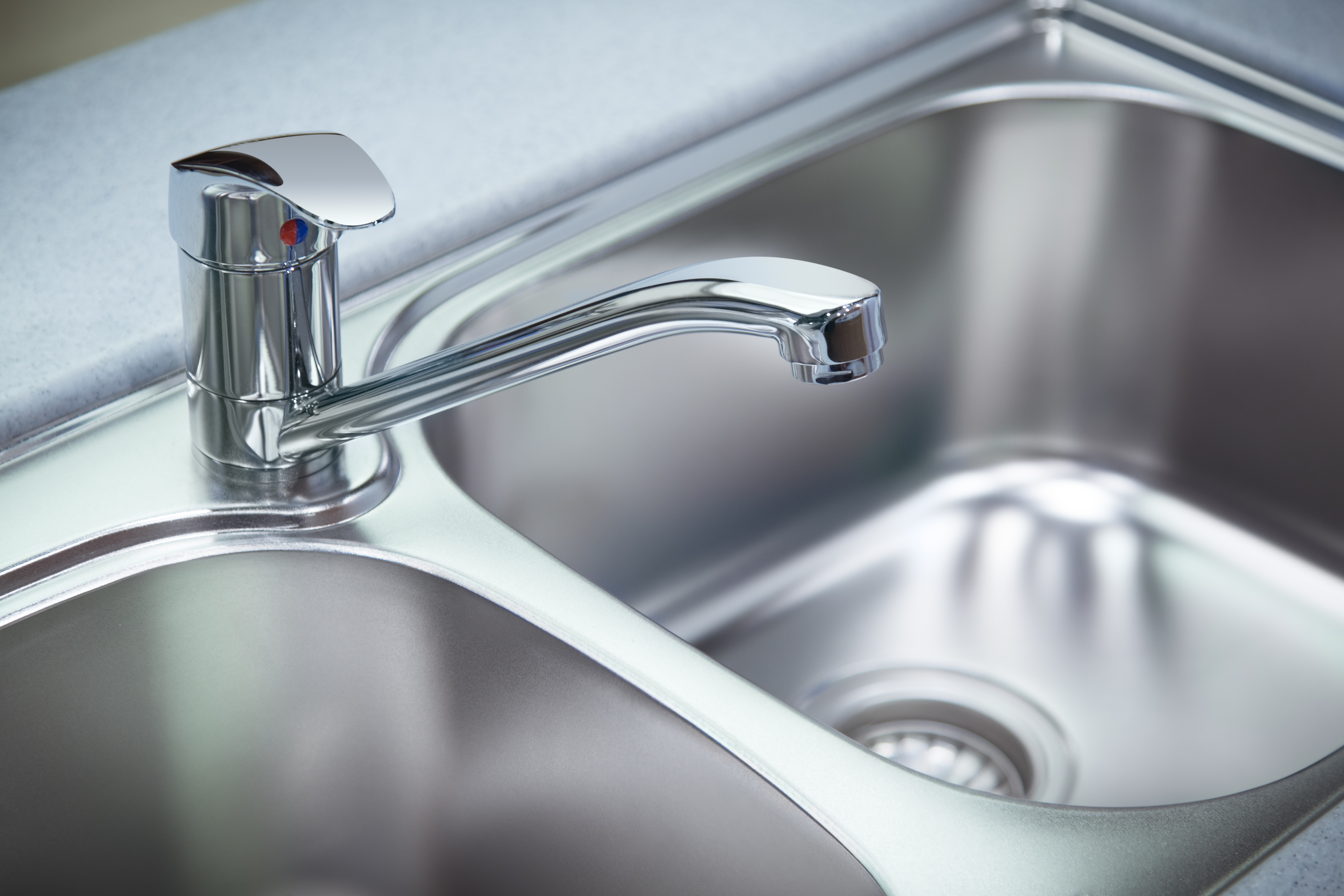Identifying a Loose Kohler Bathroom Faucet Handle
So, you’ve noticed that your Kohler bathroom faucet handle is a bit wobbly? No worries, I’m here to help you identify and understand the issue. A loose faucet handle can be quite annoying, but luckily, it’s often an easy fix. Let’s start.
- Visual Inspection: The first step in identifying a loose Kohler bathroom faucet handle is to visually inspect it. Check if the handle moves or wiggles when you try to turn the water on or off. Is there any noticeable gap between the handle and the base? Identifying these signs will help you determine if the handle is indeed loose.
- Loose Screw or Nut: One common cause of a loose faucet handle is a loose screw or nut that holds it in place. Sometimes, these can become loose over time due to regular use. Take a close look at the base of the handle and see if you can locate a screw or nut. If you find one, it’s likely the culprit behind the wobbling handle.
- Worn Out Cartridge: Another possible reason for a loose Kohler faucet handle is a worn-out cartridge. The cartridge is responsible for controlling the flow of water and temperature. Over time, it can wear out, causing the handle to become loose. If you’ve checked for loose screws or nuts and found none, it’s worth considering a worn-out cartridge as the source of the problem.
- Handle Adapter Issues: In some cases, a loose faucet handle can be attributed to problems with the handle adapter. The handle adapter connects the handle to the valve stem, allowing it to control the water flow. If the adapter becomes worn or damaged, it can result in a loose handle. Inspect the handle adapter for any signs of wear or damage to determine if it needs to be replaced.
- Professional Help: If you’ve gone through the above steps and still can’t determine the cause of the loose faucet handle, it might be time to seek professional help. A licensed plumber or a Kohler specialist will have the expertise to diagnose and fix the issue for you. Sometimes, there may be underlying problems that require professional attention to ensure a long-term solution.

What You’ll Need to Tighten the Faucet Handle
Alrighty, let’s get down to business! To tighten your Kohler bathroom faucet handle, you’ll need a few tools and materials. Don’t worry, you won’t need anything too fancy or complicated. Here’s what you’ll need:
Adjustable Wrench: An adjustable wrench is an essential tool for tightening a faucet handle. It will allow you to grip and turn the nuts or screws that hold the handle in place. Make sure to choose a wrench that fits the size of the nuts or screws on your specific faucet model.
Screwdriver: Depending on your faucet’s design, you may need a screwdriver to tighten the handle. Phillips or flathead screwdrivers are the most common types used for this purpose. Check the screws on your faucet handle to determine which type of screwdriver you’ll need.
Allen Wrench: Some Kohler faucets use Allen screws to secure the handle. If your faucet has these types of screws, you’ll need an Allen wrench of the appropriate size. These wrenches have a hexagonal shape and are often included with the faucet or can be purchased separately.
Plumber’s Tape: Plumber’s tape, also known as Teflon tape, is a handy material used to create a watertight seal when connecting plumbing fixtures. It’s useful for preventing leaks and ensuring a secure fit. You may need a plumber’s tape when reassembling the faucet handle to ensure a tight connection.
Replacement Parts (if necessary): Depending on the cause of the loose handle, you may need replacement parts. This could include screws, nuts, washers, or even a new cartridge or handle adapter. Make sure to check the specific model number of your Kohler faucet and consult the manufacturer’s website or a plumbing supply store to obtain the correct replacement parts.
A Simple Method to Secure the Kohler Bathroom Faucet Handle
Alright, let’s tighten that Kohler bathroom faucet handle and put an end to the wobbling once and for all! Follow this step-by-step guide to get the job done:
Turn off the Water: Before you begin, make sure to turn off the water supply to your faucet. Look for the shut-off valves under the sink and turn them clockwise until they are fully closed. This will prevent any accidental water flow during the tightening process.
Remove the Handle: Start by locating the screw or nut that secures the handle to the valve stem. Use an adjustable wrench or screwdriver (depending on the type of fastener) to loosen and remove it. Once the screw or nut is removed, gently lift the handle off the valve stem.
Inspect the Fasteners: With the handle removed, take a closer look at the screw or nut. Check for any signs of damage or wear. If the fastener appears worn, it’s a good idea to replace it with a new one to ensure a secure fit.
Tighten the Fastener: Place the handle back onto the valve stem and align it properly. Use the adjustable wrench or screwdriver to tighten the screw or nut, ensuring a snug fit. Be careful not to overtighten, as this could cause damage to the handle or other components.
Test for Stability: Once the fastener is tightened, give the handle a gentle shake to test its stability. It should feel firm and secure, with no wobbling or movement. If it still feels loose, double-check the fastener and tighten it further if necessary.
Reassemble and Test: If everything looks good, reassemble any other components that were removed during the process, such as decorative caps or buttons. Turn on the water supply and test the faucet to ensure there are no leaks and that the handle functions properly.
Addressing Common Challenges During the Tightening Process
Sometimes, even with the best intentions, things don’t go according to plan. If you encounter any challenges while tightening your Kohler bathroom faucet handle, don’t fret! Here are some troubleshooting tips to help you overcome common issues:
Stripped Screw or Nut: If you find that the screw or nut is stripped and won’t tighten properly, you may need to replace it. Take note of the size and type of screw or nut and visit a hardware store to find a suitable replacement. Alternatively, you can reach out to Kohler’s customer service for assistance in obtaining the correct replacement part.
Stuck Handle: If the handle is stuck and won’t come off the valve stem, try using a penetrating oil, such as WD-40, to loosen it. Apply the oil around the base of the handle and let it sit for a few minutes. Then, gently wiggle the handle back and forth while applying upward pressure to remove it.
Leaks or Drips: If you notice leaks or drips after tightening the handle, it’s possible that the cartridge or other internal components need to be replaced. Refer to the Kohler faucet’s user manual or contact customer support for guidance on replacing these parts.
Difficult Access: In some cases, the location of the faucet handle may make it difficult to access the fasteners or perform the tightening process. Consider using a mirror or a flashlight to get a better view of the area, or use a specialized tool, such as a basin wrench, to reach tight spaces.
Professional Assistance: If you’ve tried troubleshooting and are still unable to resolve the issue, don’t hesitate to seek professional help. A licensed plumber or a Kohler specialist will have the expertise and tools to tackle more complex problems and ensure a proper fix.
Tips for Keeping Your Kohler Bathroom Faucet Handle Secure
Congratulations on successfully tightening your Kohler bathroom faucet handle! Now, let’s talk about how to maintain its stability and prevent future issues. Follow these tips to keep your handle secure for the long haul:
Regular Inspections: Make it a habit to visually inspect your faucet handle periodically. Look for any signs of wobbling or movement. Catching a loose handle early on can prevent it from becoming a bigger problem down the line.
Tighten as Needed: If you notice any slight looseness in the handle, don’t procrastinate! Use the appropriate tools to tighten the fasteners promptly. Addressing small issues promptly can prevent them from escalating and potentially causing damage to other components.
Avoid Overtightening: While it’s important to ensure a secure fit, be cautious not to overtighten the handle. This can lead to damage, stripped screws, or other issues. Use gentle but firm pressure to achieve a snug fit without going overboard.
Clean and Lubricate: Regularly clean your faucet handle and the surrounding area to remove any dirt, grime, or mineral deposits that can affect its stability. Additionally, apply a small amount of silicone-based lubricant to the handle’s moving parts to keep them operating smoothly.
Gentle Handling: Treat your faucet handle with care. Avoid using excessive force when turning it and be mindful of any rough or jerky movements. Gentle handling will help maintain the integrity of the handle and prevent unnecessary strain on the fasteners.
Use the Correct Handle: Ensure that you are using the appropriate handle for your Kohler faucet model. Using a handle that is not designed for your specific faucet can result in an ill-fitting connection and potential looseness. Refer to the manufacturer’s instructions or consult with a Kohler specialist to ensure you have the correct handle.
Avoid Excessive Weight or Pressure: Be mindful of placing excessive weight or pressure on the faucet handle. Avoid hanging items such as towels or heavy objects on the handle, as this can cause strain and lead to loosening over time. Use the handle solely for its intended purpose of turning the water on and off.
Regular Maintenance: In addition to inspecting and tightening the handle, it’s important to perform regular maintenance on your Kohler bathroom faucet. This includes cleaning the aerator, checking for and repairing any leaks, and addressing any other issues promptly. By maintaining the overall health of your faucet, you can help prevent problems with the handle.
Seek Professional Help: If you encounter any recurring issues with your Kohler bathroom faucet handle or are unsure about how to perform maintenance tasks, don’t hesitate to seek professional assistance. A licensed plumber or a Kohler specialist will have the expertise to diagnose any underlying problems and provide the necessary solutions.
Follow Manufacturer’s Guidelines: Lastly, always refer to the manufacturer’s guidelines and instructions when it comes to maintenance and care for your specific Kohler faucet model. They will provide valuable information regarding recommended cleaning methods, replacement parts, and any specific maintenance requirements.
How to Tighten a Loose Kohler Faucet Handle Hunker
How to Fix a Faucet : How to Tighten a Kitchen Sink Handle
Kohler bathroom faucet how to remove, has toggle
Related Posts:
- How To Repair Leaky Delta Bathroom Faucet
- Phylrich Bathroom Faucets
- Bathroom Faucet Images
- Bathroom Faucets Polished Brass Single Handle
- Remove Kohler Bathroom Faucet
- How To Apply Plumber’s Putty To Bathroom Faucet
- Moen Sage Bathroom Faucet Centerset Brushed Nickel
- Masco Bathroom Faucets
- Polished Copper Bathroom Faucets
- Bathroom Faucet Hose Connector






